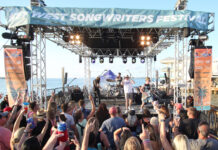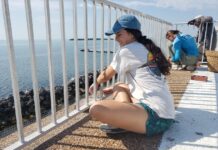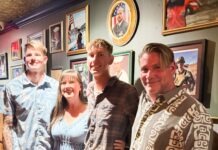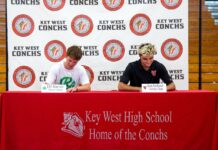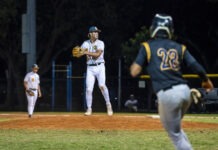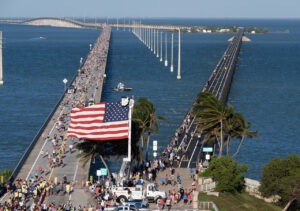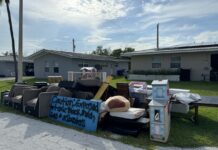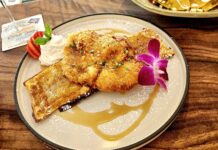
Cori Convertito, curator and historian with the Key West Art & Historical Society, recently held her monthly “Happy Hour with the Historian” lecture to a packed room of history enthusiasts. Her focus this month was the man responsible for linking Key West to the rest of the United States — Henry Flagler.
Speaking at Comedy Key West on Whitehead Street, Convertito recounted the story of Flagler, the late 19th- and early 20th-century oil and railroad tycoon, who undertook one of the most ambitious engineering projects of his time — of all time, in fact. His goal, Convertito said, was to enable rail travel to the Keys, primarily for transporting goods and facilitating tourism.
“Flagler’s professional career was during an era of great mechanical feats like the construction of the Titanic and the Panama Canal,” she said. “At the time, Key West, with a population of around 18,000, was Florida’s largest cosmopolitan city, which had a lot to offer with the fishing, sponging and cigar industries.”
But it was tough and time-consuming to reach the island, and to ship its exports to the mainland.
Convertito illustrated her presentation with photographs of Key West from the late 1800s. The images, evoking the aesthetic of an old Western film, drew laughs from the audience upon seeing what the “largest cosmopolitan city in Florida” looked like back then.
Flagler’s success wasn’t a solo effort, Convertito said. He had the support of Florida’s Legislature, which granted land to American businessmen in exchange for railroad construction. Flagler also negotiated with Julia DeForest Tuttle, known as the “Mother of Miami,” to secure the land necessary for his Overseas Railway.
But Flagler’s ambitious project was far from easy. It took seven years to complete, with three major hurricanes disrupting and destroying large sections of the construction. Many at the time mocked Flagler’s vision, referring to the railroad as “Flagler’s Folly.”
“At one point, Flagler himself admitted, ‘If I don’t build it, no one will,'” Convertito said. “The public believed it was an impossible task, given the swampy terrain of Florida.”
Despite the skepticism, Flagler persevered. The project, which required 42 million pounds of steel, 96 tons of gravel, 78,000 wood pilings, 17 million cubic yards of earth, and $50 million (equivalent to $1.6 billion today), was finally completed on Jan. 21, 1912. More than three-quarters of Key West’s population turned out to greet Flagler as he arrived on the inaugural train.
It was the only time he would ride the railroad to Key West. Flagler died shortly after the project’s completion on May 20, 1913 at the age of 83.
The railroad’s legacy, however, didn’t last long. On Labor Day in 1935, a hurricane wiped out 42 miles of track. The railroad was eventually sold to the state, which repurposed it into today’s Overseas Highway. While Flagler’s railroad might not have been commercially successful, it forever changed the landscape of the Keys, connecting the islands to mainland America. Today, tourists are reminded of Flagler’s monumental contribution as they see the iconic Old Seven Mile Bridge.
For more information about the next Happy Hour with the Historian, visit kwahs.org.

